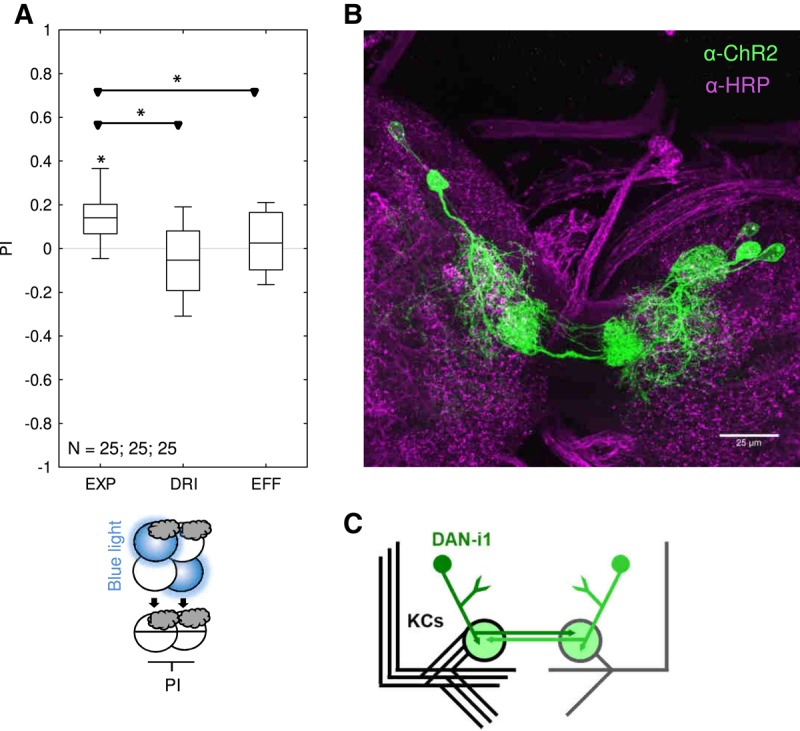Figure 3.

One-trial memory for the association of odor and optogenetic activation of 864-DAN. (A) Larvae were trained by presenting odor and blue light for the optogenetic activation of 864-DAN either together (Paired) or separately (Unpaired), with 2.5 min trial duration. Differences in odor preference after such training are quantified by the PI and reflect associative memory. The sketches toward the bottom of the figure depict training and testing procedures. Radiating blue Petri dishes indicate light activation during training; Petri dishes with only the substrate, that is pure agarose, but without any tastant added were used throughout. The gray cloud indicates the odor n-amylacetate. PIs are positive for the experimental genotype (EXP: 864-DAN>UAS-ChR2-XXL) but not for the genetic controls (DRI: 864-DAN>w1118; EFF: attP40/attP2>UAS-ChR2-XXL), implying that optogenetic activation of 864-DAN leads to reward memory after one training trial. Further details as in Figure 1. Preference scores underlying the PIs are documented in Supplemental Figure S3. (B) Immunohistochemical preparation of the mushroom body region of the experimental genotype. ChR2-XXL is visualized by an anti-ChR2 mouse primary antibody and a Cy3 donkey anti-mouse secondary antibody (green). Confirming an earlier report (Saumweber et al. 2018), this reveals strong and reliable expression in the DAN-i1 neuron of both hemispheres, plus a few additional cell bodies that vary across specimens; Alexa 488 anti-HRP staining yields staining of neuronal membranes for reference (magenta). Data were acquired with a 63× glycerol objective. (C) Schematic drawing of the left and right mushroom body and the innervation of the upper toe of the medial lobe of the mushroom body by the DAN-i1 neurons of both hemispheres (shown in green).
